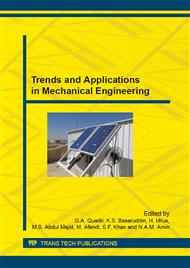p.210
p.215
p.220
p.226
p.232
p.238
p.243
p.248
p.257
Scaled down Design of a Cold and Hot Flow Model Based on a Bubbling Fluidized Bed Pilot Plant Gasifier
Abstract:
Bubbling fluidized bed (BFB) is a vital equipment in many applications in the energy, pharmaceuticals, and chemicals process industries due to its numerous advantages such as large heat capacity inside a bed, and rapid heat and mass transfer rate. In spite of numerous research activities, achieving high fluidization performances in BFB process is still a challenge of science. This research is being conducted to study the hydrodynamic regime of a BFB pilot plant gasifier. To this end, a lab-scale cold model was first designed based on the empirical equations and scaling laws. The scaling laws was used to scale down the Tenaga Nasional Berhad-PETRONAS (TNBR-PETRONAS) pilot plant gasifier into a small scale laboratory model. Moreover, the empirical equations were utilized to determine the critical parameters such as bed pressure drop, height of the bed, number of orifices of the distributor plate and the pitch size. Finally a lab-scale hot flow model will be designed based on the cold model geometric dimensions but under a real operating conditions as that of a pilot plant.
Info:
Periodical:
Pages:
232-237
Citation:
Online since:
August 2015
Keywords:
Price:
Сopyright:
© 2015 Trans Tech Publications Ltd. All Rights Reserved
Share:
Citation:


